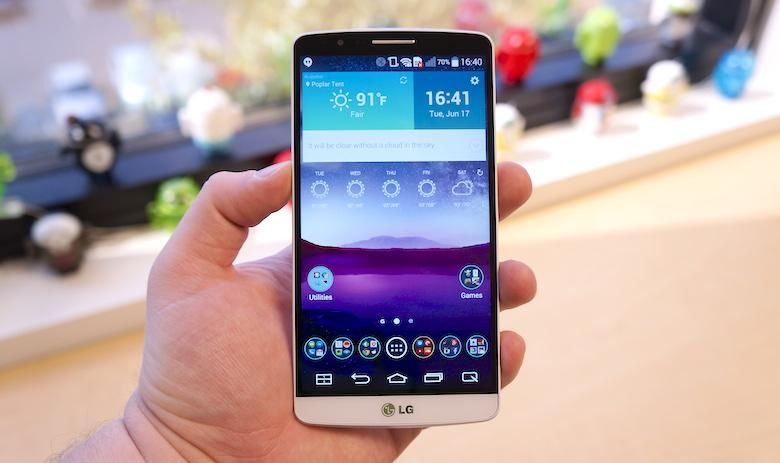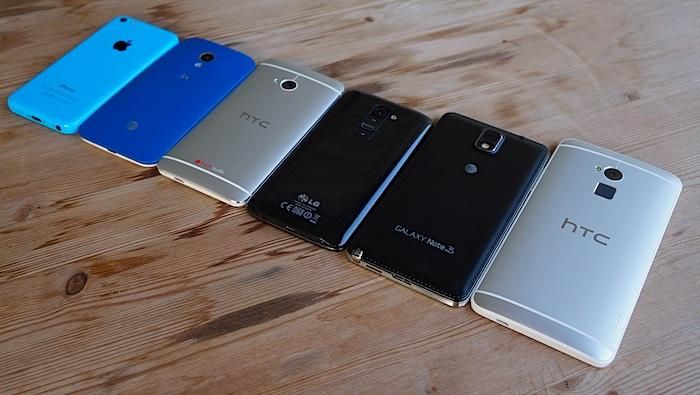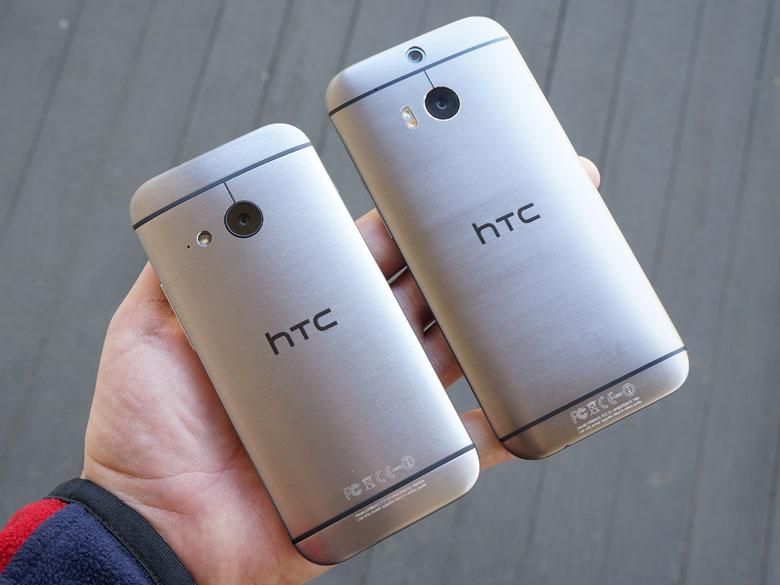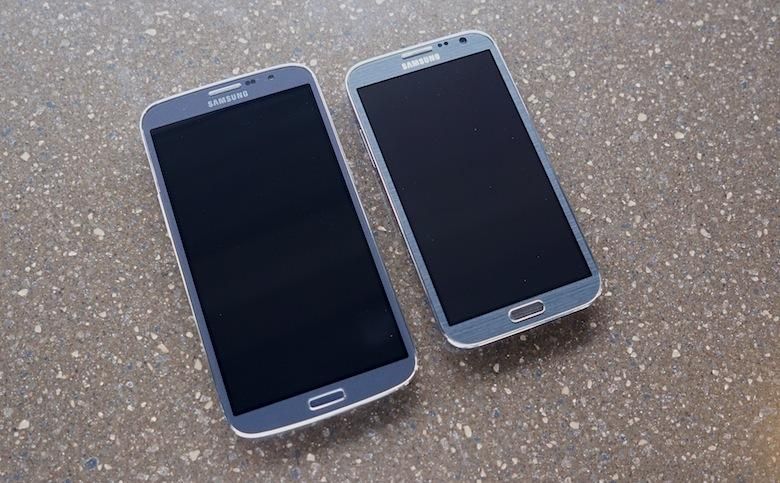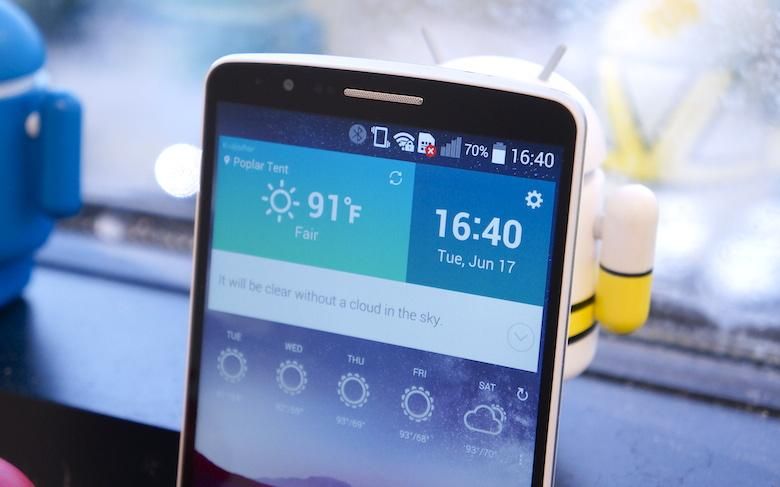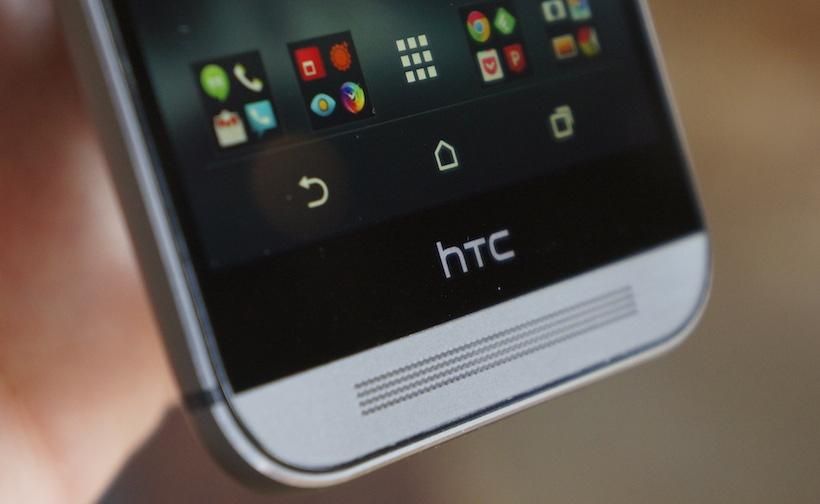Back in May, I asked an interesting question, one many have probably pondered themselves, “Will your next phone be bigger or smaller?”
For whatever reason, in today’s smartphone market, “bigger” has nearly become synonymous with “better”. Each year, every smartphone manufacturer’s flagships are larger than the previous model.
The Galaxy S III had a 4.8-inch display; the Galaxy S4 had a 5-inch display, and the Galaxy S5 now has a 5.1-inch display. The same trend is also found in the already oversized Galaxy Note brand. The original Note handset was 5.3-inches, followed by the 5.5-inch Galaxy Note II, then the 5.7-inch Galaxy Note 3. LG’s Optimus G from 2012 measured 4.7-inches diagonally; the G2 was 5.2-inches from corner to corner; and the G3 is 5.5-inches.
HTC is guilty, too. The One X and One M7 were both 4.7-inches, and this years One M8 is 5-inches. And rumor has it, Apple will soon be getting in on the oversized smartphone fun.
Over the last five years, all of these phones have grown and expanded from their 3.5- to 4.3-inch predecessors which, for those who enjoy larger smartphones, is fine. However, not everyone does, and that poses a problem for those who would prefer a phone closer to 4-inches.
The thing is, OEMs have all but stopped making high-end smartphones under 4.7-inches. All the “mini” versions of the high-end phones – the Galaxy S4 mini, One mini 2, G2 mini, etc. – all are significant downgrades from their full-sized counterparts. Instead of Snapdragon 800 or 801 chipsets, they come with Snapdragon 400 chips. Instead of 2GB or 3GB RAM, they come with just 1GB. The image sensors don’t get nearly the same love or attention, the batteries are typically tiny, and build quality isn’t usually on the same level as the true flagships.
In other words, there’s a great disparity between the flagships of this world and everything else. With exception of maybe the Moto X, there is no middle ground. It’s all or nothing – big and great or small and tragically neglected.
It’s clear, though, that some OEMs realize there is an issue because a few manufacturers are focusing on one common thing: bezel reduction.
Samsung’s flagships have grown over the last four years, but the physical footprint has only slightly changed. The Galaxy S III, for instance, housed a 4.8-inch display and was 136.6mm tall, 70.6mm wide, and 8.6mm thick. The Galaxy S4 bumped the display size to 5-inches, but was actually the exact same height as the S III, 0.8mm narrower, and 0.7mm thinner. And the Galaxy S5 with a 5.1-inch display, is just 5.4mm taller, 1.9mm wider, and .5mm thinner than the Galaxy S III.
One of the most impressive bezel reductions I’ve personally experienced is with the Moto X. Despite the 4.7-inch display, the Moto X’s physical footprint isn’t much larger than that of the iPhone 5. It’s 129.3mm tall, 65.3mm wide, and 10.4mm thick. Compared to the iPhone 5, it’s 5.5mm taller, 6.7mm wider, and 2.8mm thicker.
Even more impressive is LG’s extra slim bezels. The LG G3 houses a 5.5-inch display, yet it’s only 146.3mm tall, 74.6mm wide, and 8.9mm thick. Although it’s physically closer in size to other 5.5-inch smartphones than to 5-inch phones, it feels much smaller than it actually is. That’s due in large part to how close the screen is to all edges. The top and bottom bezels are incredibly thin, and the trim along the sides of the display is just barely there.
LG brags about this lack of bezels in a G3 promotional video, saying, “…you may forget you’re holding a 5.5-inch phone.”
That’s not exactly … untrue. The G3 is definitely more manageable than, say, the Find 7a. It feels and looks more compact because it is. And immediately after taking it out of the box, I was impressed.
Instead of it being some big shock factor, though, it’s exactly what Michael Fisher said about the Moto X. You feel like you’re getting away with something. You’re getting the absolute maximum amount of real estate in the smallest package possible. There is very little wasted space, and that’s very important for a phone of this caliber.
My point? When I asked that question last month, I was convinced I didn’t want anything larger than a 5-inch display anymore. Deep down inside, I still don’t. But after having used the G3 for several days, I really like the idea of manufacturers trimming away all the excess plastic and metal.
Granted, my personal phone, the One M8, is unapologetic about its top and bottom bezels. And, frankly, I have no problem with the M8’s height for one reason: HTC puts its bezels to great use. BoomSound is a feature I love and use often.
But I digress. The G3’s physical footprint is impressive and underrated. It’s the first phone larger than 5-inches that doesn’t feel too big. And the extra display width is definitely welcomed.
For the first time … possibly ever, I’m grateful for slim bezels.
So I ask you, readers, how important are bezels to you? Do they make or break a phone for you? Or could you care less about bezels, so long as the phone itself is awesome?

